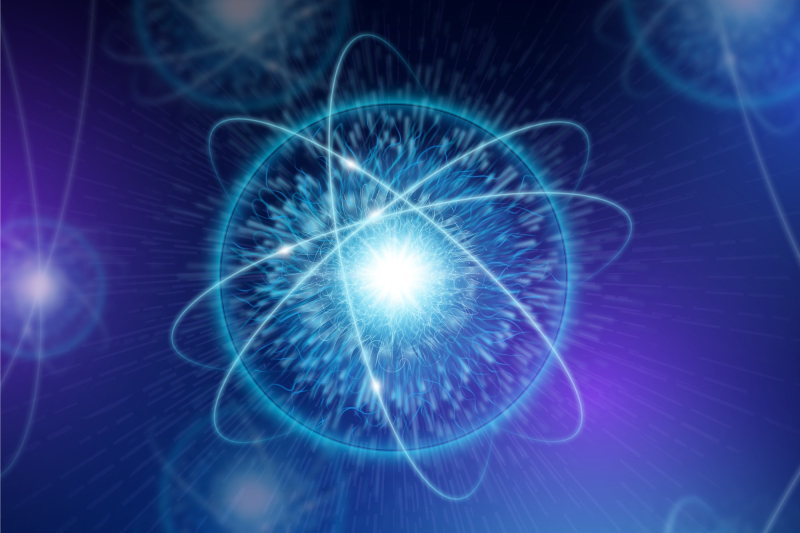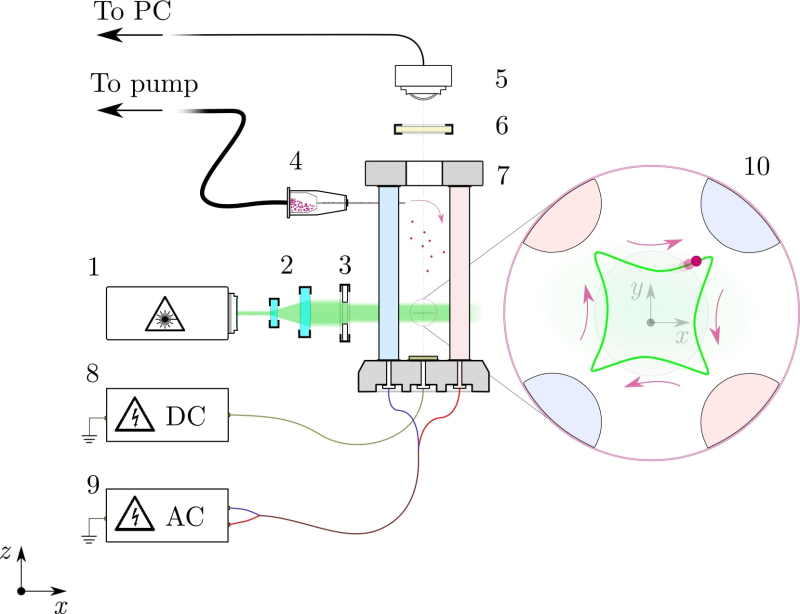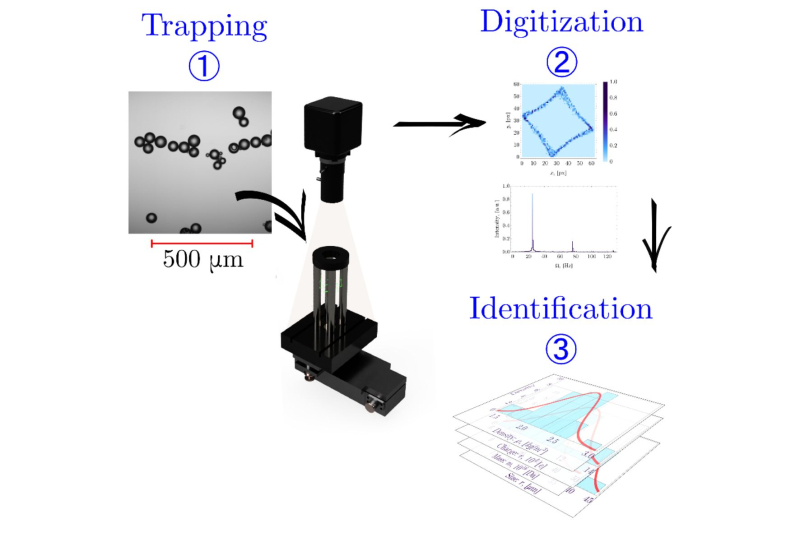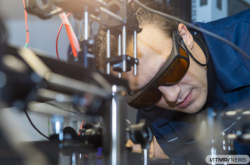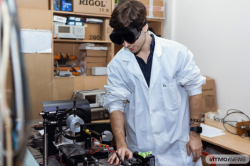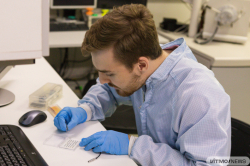Microscopic objects or even single particles often become research subjects in physical, chemical, or biological studies. Their size makes them difficult to analyze, which is why the research methods used to determine their properties are constantly being improved.
In an earlier article, the ITMO physicists described the theory behind an approach for simultaneous measurement of several particle characteristics (size, mass, charge, and density) using a quadrupole trap. This method works as follows: the particle in question is placed in between alternating electric fields that “trap” it, locking its movement. Thanks to the carefully selected parameters of the fields, the particle stays fixed with only slight oscillations. To visualize it, imagine a table tennis ball held afloat by several equal air blasts.
If the amplitude of the electric fields is multiply increased, the energy transferred to the particle will make it controllably move inside the trap along diamond-shaped orbits. According to mathematical calculations, the features of this movement can serve as identifiers of the particles’ physical properties.
In their recent publication, the scientists have experimentally demonstrated the efficiency of the new approach on 35 silica microparticles that were placed inside the quadrupole trap and made to move by an electric field.
Inside the trap, the researchers tracked the location of each particle by radiating it with a laser beam and registering its scattering with a high-speed camera. Using the resulting video footage, the researchers were able to analyze the movement of each particle frame by frame. The experiment demonstrated that particles moved along orbits shaped like a diamond; each of its four angles coincided with the four sources of the electric field inside the trap.
Using the parameters of particle orbits, the researchers calculated the mathematical coefficients that they used to estimate the particles’ size, mass, charge, and density. In order to validate their method, the scientists then compared their results with those produced by the conventional approaches, including microscopy, spectroscopy, and mass spectroscopy. It turned out that the error for mass estimation was 10%, for charge and size – 16%, and for density – 16%. These results are comparable to those produced by other existing methods.
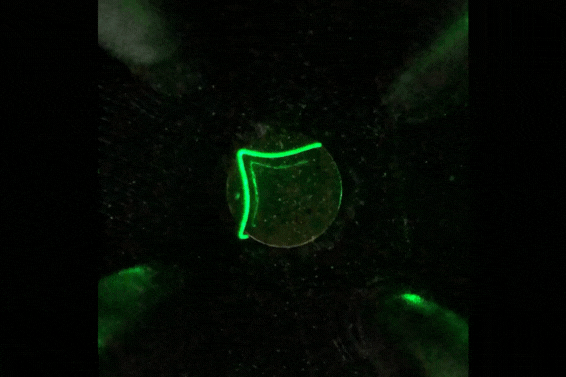
The orbit of a silica microparticle in the quadrupole trap. Video courtesy of Dmitrii Shcherbinin
“With the non-destructive method we suggest, we can describe single nanoparticles that make up industrial materials. Moreover, while this approach doesn’t require any expensive equipment, its accuracy is comparable to the standard experimental procedures. Thanks to this, our method is applicable in analytical chemistry, materials science, biology, and medicine – it can be used to analyze both materials and live microscopic objects. In the future, we are planning to use this approach to determine the properties of nanoparticles localized in radiofrequency traps,” explains Dmitrii Shcherbinin, the project’s principal investigator and a senior researcher at the International Research and Educational Center for Physics of Nanostructures.

Members of the research group. Photo courtesy of Dmitrii Shcherbinin
The project’s team includes researchers, PhD, Master’s, and Bachelor’s students of the research center and the program Physics of Nanostructures. This study, supported by the Russian Science Foundation, was described in an article published in Powder Technology.
